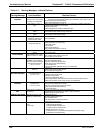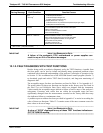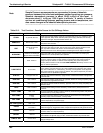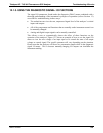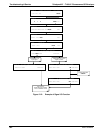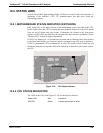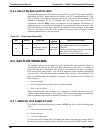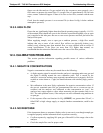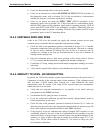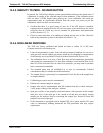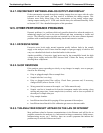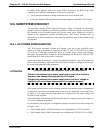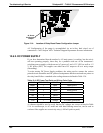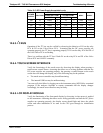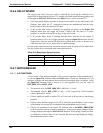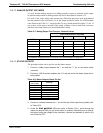
Troubleshooting & Service Teledyne API - T100 UV Fluorescence SO2 Analyzer
246
Check for disconnected cables to the sensor module.
Carry out an electrical test with the ELECTRICAL TEST (ETEST) procedure in
the diagnostics menu, refer to Section 5.9.5. If this test produces a concentration
reading, the analy
zer’
s electronic signal path is working.
Carry out an optical test using the OPTIC TEST (OTEST) procedure in the
diagnostics menu, refer to Section 5.9.4. If this test results in a concentration signal,
then the PMT sensor and the electronic
signal path are operating properly
. If the M
passes both ETEST and OTEST, the instrument is capable of detecting light and
processing the signal to produce a reading. Therefore, the problem must be in the
pneumatics, optics or the UV lamp/lamp driver.
12.4.3. UNSTABLE ZERO AND SPAN
Leaks in the T100 or in the external gas supply and vacuum systems are the most
common source of unstable and non-repeatable concentration readings.
Check for leaks in the pneumatic systems as described in Section 11.3.6. Consider
pneum
atic co
mponents in the gas delivery system outside the T100 such as a change
in zero air source (ambient air leaking into zero air line or a worn-out zero air
scrubber) or a change in the span gas concentration due to zero air or ambient air
leaking into the span gas line.
Once the instrument passes a leak check, perform a flow check (refer to Section
11.3.7) to ensure that the instrument is supplied with a
d
equate sample gas.
Confirm the UV lamp, sample pressure and sample temperature readings are correct
and steady.
Verify that the sample filter element is clean and does not need to be replaced.
12.4.4. INABILITY TO SPAN - NO SPAN BUTTON
In general, the T100 will not display certain control buttons whenever the actual value of
a parameter is outside of the expected range for that parameter. If the calibration menu
does not show a SPAN button when carrying out a span calibration, the actual
concentration must be outside of the range of the expected span gas concentration,
which can have several reasons.
Verify that the expected concentration is set properly to the actual span gas
concentration in the CONC sub-menu.
Confirm that the SO
2
span gas source is accurate.
If you are using bottle calibration gas and have recently changed bottles, bottle to
bottle variation may be the cause.
Check for leaks in the pneumatic systems as described in Section 12.6.1. Leaks can
dilute the span gas and, hence, the concentration that the analy
zer mea
sures may fall
short of the expected concentration defined in the CONC sub-menu.
If the physical, low-level calibration has drifted (changed PMT response) or was
accidentally altered by the user, a low-level calibration may be necessary to get the
analyzer back into its proper range of expected values. One possible indicator of this
scenario is a slope or offset value that is outside of its allowed range (0.7-1.3 for
slope, -20 to 150 for offsets). Refer to Section 12.7.2.8 on how to carry out a low-
level hardware calibration.
06807C DCN6650



